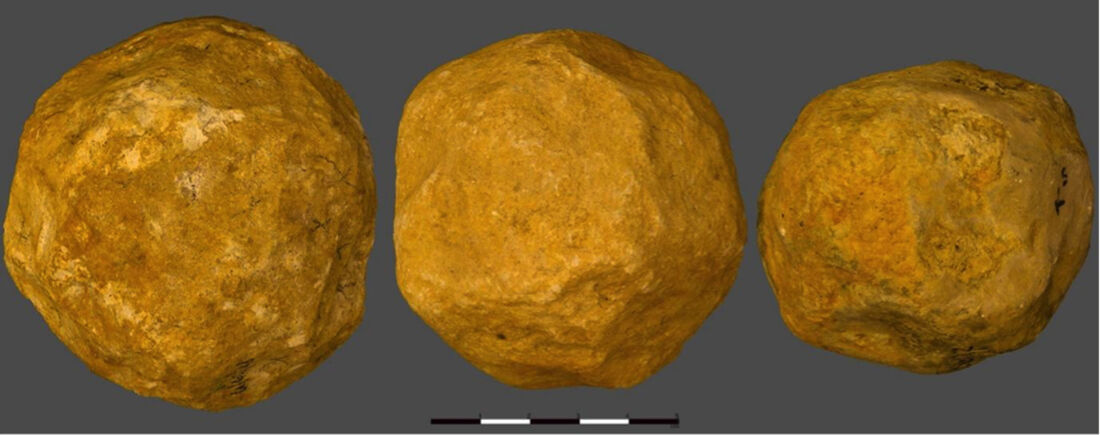New 3D analysis of limestone spheroids from the Early Acheulian site of ‘Ubeidiya (Israel) indicates intentional imposition of symmetric geometry
A new paper has just been published in the Royal Society Open Science journal revealing that hominins intentionally made the limestone spheroids at the Early Acheulian site of 'Ubeidiya, suggesting the existence of pre-conceived mental templates of relati
Spheroids are enigmatic stone tools found in some African and Eurasian Early Paleolithic toolkits. Although they have been described by prehistorians for a long time, little is actually known about why and how they were made by our early hominin ancestors. At the crux of debates surrounding these spherical tools, is the question of whether they were intentionally made or, if they were accidentally produced when hominins intensively used stones for hammering or flake production.
The study just published in the journal Royal Society Open Science, presents new results from a research project funded by the Gerda Henkel Foundation and conducted by an international team with the Computational Archaeology Laboratory of the Hebrew University of Jerusalem and Tel Hai College in Israel and researchers from the Institute of Human Paleoecology and Social Evolution (IPHES-CERCA) and the Rovira and Virgili University in Tarragona (Spain).
The team applied state-of-the-art 3D analysis methods developed at the Computational Archaeology Laboratory of the Hebrew University, directed by Professor Leore Grosman, including spherical harmonics and surface curvature, to study 150 limestone spheroids from the 'Ubeidiya site (Israel). Dating to ca. 1.4 million years ago, 'Ubeidiya presently represents the oldest occurrence of Acheulian stone tool producing hominins outside of Africa.
The innovative methodology allowed the team to recognize and reconstruct the stone reduction sequence used by ‘Ubeidiya hominins to manufacture the spheroids, based on observations of their scar facets and geometry. The results indicate that these spheroids were not accidentally produced but rather; they must have been intentionally manufactured following a premeditated stone reduction strategy aimed specifically at making spherical objects.
Creating a sphere on stone is a remarkable accomplishment that reveals that Early Acheulian hominins already dominated complex stone manufacture technologies enabling them to reproduce a predetermined geometrical form. Another major result from this work is that the sphere - and not the tear-shaped Acheulean biface – may be the first symmetrical shape to have been reproduced on stone by our early ancestors.
This ongoing research project continues to investigate how and why spheroids were made and what the implications of their appearance in early Paleolithic toolkits could mean in terms of the evolution of hominin cognitive and technological capacities.
Article reference:
You can consult the article The limestone spheroids of 'Ubeidiya: intentional imposition of symmetric geometry by early hominins? here

